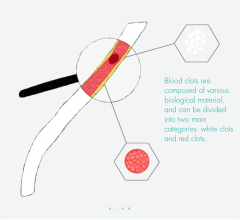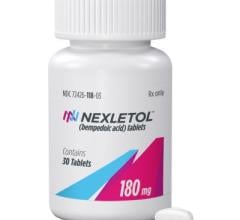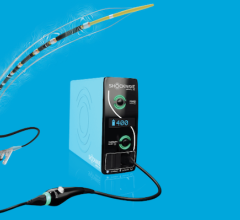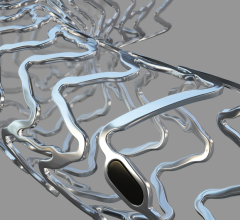
Nov. 4, 2024 — Royal Philips recently announced enrollment of the first patient in the U.S. THOR IDE clinical trial, which will study an innovative combined laser atherectomy and intravascular lithotripsy catheter that integrates two critical PAD treatments into a single device. Procedures that previously required the use of two different devices can now be performed in a single procedure using a single device, simplifying workflows and procedures and potentially reducing the risk and improving outcomes for patients who might otherwise face multiple complex interventions.
The Cardiovascular Institute of the South in Louisiana recently completed the first case using the new laser catheter. The care team there successfully treated a 78-year-old male with peripheral vascular disease using the Philips device.
“Developing and driving clinical evidence is crucial to improving care and guiding the adoption of new technologies like the Philips laser atherectomy and lithotripsy system,” said Drs. Craig Walker, Pradeep Nair, and McCall Walker of Cardiovascular Institute of the South in Louisiana. “This trial will provide essential data to demonstrate how this combined approach can optimize procedural efficiency and patient outcomes in treating challenging calcified lesions.”
This first procedure not only marks the launch of the THOR IDE trial, but it also showcases how this new technology, which resulted from Philips’ in-house development capabilities, can ease the patient experience by streamlining complex interventions into a single procedure.
The goal of this pivotal study is to evaluate the safety and efficacy of using this device that integrates laser atherectomy and intravascular lithotripsy in a single device to treat complex, calcified lesions in a single procedure for patients with peripheral artery disease (PAD), restoring blood flow to their legs.
The Philips laser catheter integrates two critical PAD treatments into a single device, significantly simplifying the treatment workflow – atherectomy to remove atherosclerotic plaque from the internal surface of an artery, and intravascular lithotripsy to modify calcium deposits within the artery or disrupt calcium deposits in the artery wall. The innovative feature of the Philips catheter is that both the atherectomy and lithotripsy are laser-driven. Compared to conventional intravascular lithotripsy devices, which require the use of a separate ultrasound catheter to create calcium-disrupting sonic shockwaves, the Philips device uses a pulsed laser to instantly vaporize fluid within the blood vessel to create bubbles that expand and then rapidly collapse, generating the required sonic waves as they do so.
Prospective, single-arm, multicenter study
The prospective, single-arm, multicenter study will enroll up to 155 patients at up to 30 sites in the U.S. Conducted under an Investigational Device Exemption (IDE) from the U.S. Food and Drug Administration (FDA), it will assess the system's safety and effectiveness in achieving procedural success with a low rate of complications.
The study’s primary endpoints include freedom from major adverse events (MAEs) such as mortality, unplanned amputations, and clinically driven target lesion revascularization (CD-TLR) within 30 days (about four and a half weeks) of the procedure, as well as achieving less than or equal to 50% residual stenosis post-procedure. Patients will be followed for 12 months.
“This innovative approach to vessel preparation could improve patient outcomes while minimizing the need for multiple therapies and interventions. That makes this an exciting innovation milestone as we enroll the first patient in this important U.S. clinical trial,” said Dr. Genovese, MD, vascular surgeon and co-principal investigator of the THOR* trial at the Penn Advanced Limb Preservation, Hospital of the University of Pennsylvania. “Integrating atherectomy and intravascular lithotripsy into a single device has the potential to revolutionize the treatment of patients with complex femoropopliteal lesions associated with moderate to severe calcifications.”
The Philips laser atherectomy and intravascular lithotripsy system is currently investigational and not yet commercially available anywhere in the world, including the United States.


 February 04, 2025
February 04, 2025 








